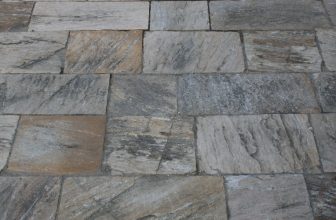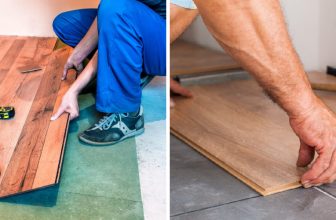How to Dry Concrete Floor After Water Leak
Have you recently dealt with a water leak in your home, and now have to figure out how to dry the concrete floor? No need to worry- it can be a simpler process than expected! In this blog post, we will explore the different ways you can ensure that your concrete surfaces are dried completely after a water incident. We’ll also investigate what kind of precautions should be taken before starting any drying process so that damage is minimized or avoided altogether.
Water leaks are a homeowner’s worst nightmare, and can cause significant damage if not taken care of quickly. If your concrete floor has been affected by a water leak, it’s critical that you act fast in order to avoid further damage. The good news is that there are some steps you can take to properly dry out the floor and salvage its condition – that’s where this blog post comes in! In this post we will provide tips on how to dry concrete floor after water leak .So read on as we walk through exactly how to handle wet concrete floors efficiently and safely!
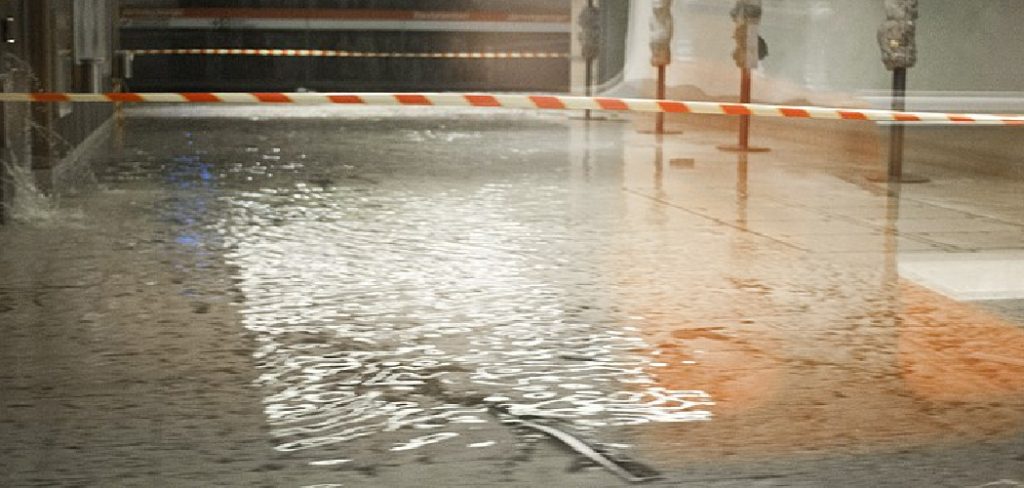
Why is It Important to Dry Concrete Floor After Water Leak?
1 . To Prevent Mold Growth
Mold can grow within 24-48 hours when moisture is present on a surface. A wet concrete floor provides an ideal place for mold growth as it has the perfect conditions of dark and dampness. If you don’t dry your concrete floor after a water leak, you might end up with toxic black mold that can cause respiratory problems and other health issues.
2. To Avoid Structural Damage
Concrete is a porous material that can absorb water, and this can weaken the structure of your floor. When you have water sitting on your concrete floor, it can seep into cracks and joints, causing them to expand and potentially lead to cracks or even collapse in extreme cases. By drying your concrete floor after a water leak, you can prevent potential structural damage and save yourself from costly repairs.
3. To Prevent Stains and Discoloration
Water can also cause stains and discoloration on your concrete floor, especially if it contains minerals or other impurities. These stains can be difficult to remove once they set in, which can affect the overall appearance of your floor. By drying your concrete floor after a water leak, you can avoid these unsightly stains and maintain the aesthetic appeal of your space.
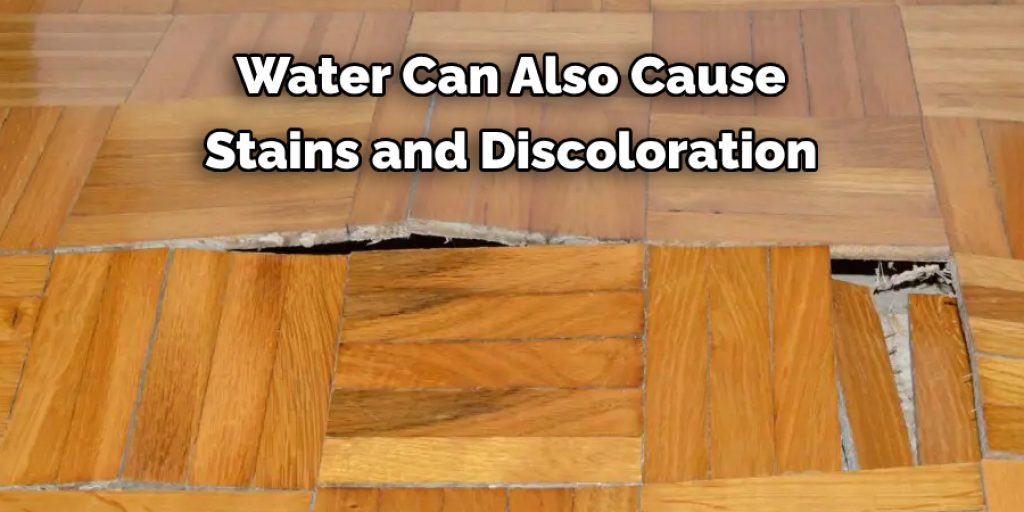
4. To Avoid Bad Odors
A wet concrete floor can create a musty smell that is not only unpleasant but also difficult to get rid of. This odor can linger for weeks or even months if the moisture is not completely dried out. By drying your concrete floor after a water leak, you can prevent these bad odors and maintain a fresh and clean environment.
5. To Protect Your Investment
Installing a concrete floor is a significant investment, and it’s important to protect it from any damage. By drying your concrete floor after a water leak, you are not only preventing potential damages but also preserving the lifespan of your floor. This can save you from the hassle and expense of having to replace or repair your concrete floor in the future.
How to Dry Concrete Floor After Water Leak in 5 Easy Steps
Step 1: Safety First
Before beginning the process of drying your concrete floor, it’s important to prioritize safety. This includes turning off the electricity in the affected area and wearing protective gear such as rubber gloves, boots, and a face mask.
Step 2: Remove Standing Water
The first step to drying out a concrete floor after a water leak is to remove any standing water. You can use a wet/dry vacuum or a pump to remove large amounts of water. For smaller areas, towels and mops can be used.
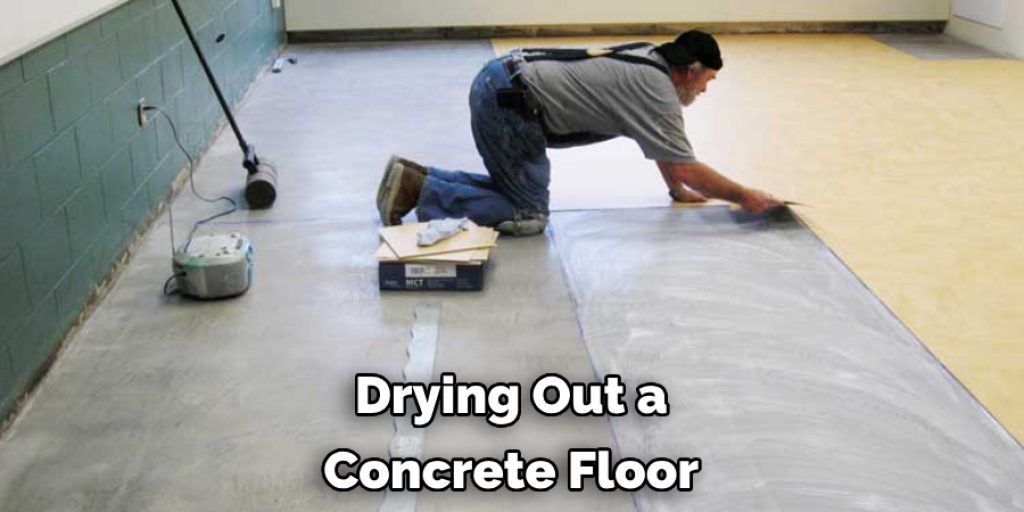
Step 3: Dry the Surface
Once all standing water has been removed, it’s important to dry the surface of the concrete floor. Use a mop or squeegee to remove excess moisture. Next, use fans and dehumidifiers to circulate air and remove any remaining moisture.
Step 4: Check for Moisture Underneath
After the surface of the concrete floor has been dried, it’s important to check for any moisture underneath. If possible, lift a corner of the flooring or use a moisture meter to check for dampness. If there is still moisture present, continue to dry the surface and check again in a few hours.
Step 5: Use a Concrete Sealant
To prevent any future water damage, it’s recommended to use a concrete sealant on your dried floor. This will help to protect against any potential leaks or spills in the future.
By following these five easy steps, you can effectively dry out your concrete floor after a water leak. It’s important to act quickly in order to prevent any further damage and ensure the safety of your home or space. Remember, if you are unsure about handling the situation yourself, it’s always best to consult a professional for assistance. So, don’t hesitate to reach out for help and follow these steps for a safe and effective outcome.
Some Additional Tips to Dry Concrete Floor After Water Leak
1 . Do Not Wait
If you have experienced a water leak on your concrete floor, it is important to act quickly. The longer you wait, the more damage can be caused. Water can seep into the pores of the concrete and weaken its structure, causing cracks and even mold growth. So make sure to start drying the area as soon as possible.
2 . Remove Standing Water
The first step in drying a concrete floor after a water leak is to remove any standing water. You can use a wet vacuum or a sump pump to do this. Make sure to wear protective gear, such as rubber boots and gloves, when removing the water.
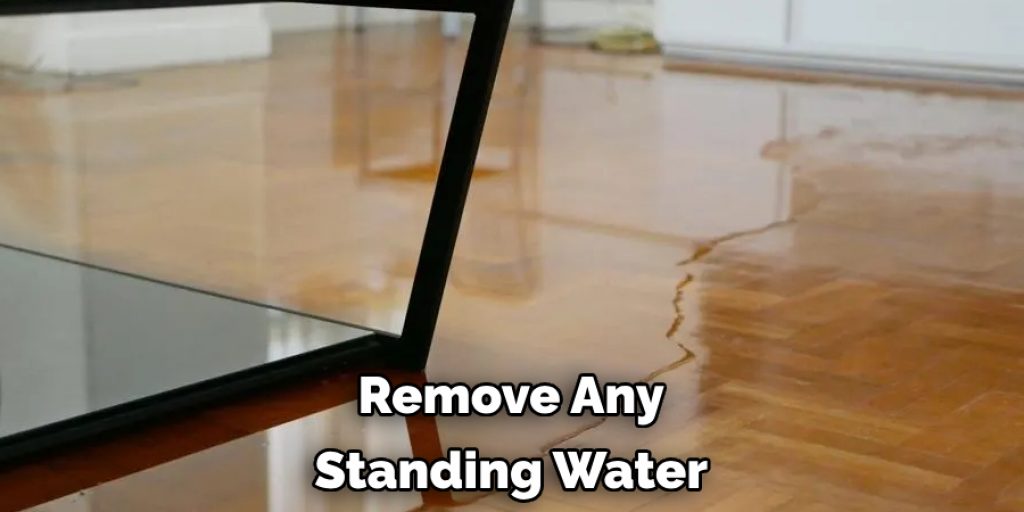
3 . Use Fans and Dehumidifiers
Once the standing water has been removed, it is important to start drying the area. You can use fans and dehumidifiers to speed up the process. Place them strategically around the affected area to ensure that air is circulating and moisture is being removed from the air.
4 . Use a Wet/Dry Vacuum
In addition to using fans and dehumidifiers, you can also use a wet/dry vacuum to remove any remaining moisture from the concrete. This will help prevent mold growth and further damage to the structure of the concrete.
5 . Check for Mold
After drying the concrete floor, it is important to thoroughly check for any signs of mold. If you see any, make sure to contact a professional mold remediation company. Mold can be dangerous to your health and should be removed by experts.
6 . Use a Sealant
To further protect your concrete floor from any future water leaks, consider using a sealant. This will help prevent water from seeping into the pores of the concrete and causing damage. Be sure to choose a sealant that is specifically designed for use on concrete floors.
Frequently Asked Questions
What Precautions Should I Take When Trying to Dry a Concrete Floor After a Water Leak?
If you are dealing with a water leak on your concrete floor, it is important to take the appropriate precautions before attempting to dry it. This will help ensure that the drying process is done effectively and safely. Here are some things you should keep in mind:
- Turn off all electricity to the affected area. This will prevent any potential electrical hazards.
- Wear protective gear such as gloves, goggles, and a mask to protect yourself from harmful bacteria and chemicals that may be present in the water.
- Thoroughly clean and disinfect the area before starting to dry it. This will help prevent mold growth and other potential health risks.
- Use a wet/dry vacuum to remove as much water as possible. This will help speed up the drying process and prevent further damage.
- If there is standing water, use a sump pump or hire a professional to remove it. Standing water can be difficult to fully remove and may cause more damage if left unattended.
- Open windows and doors in the affected area to allow for proper ventilation. This will help reduce the humidity level and aid in the drying process.
- Use dehumidifiers and fans to further speed up the drying process. These machines can help remove excess moisture from the air and circulate it, helping to dry out the concrete floor more quickly.
How Long Will it Take to Dry a Concrete Floor After a Water Leak?
The time it takes to dry a concrete floor after a water leak will vary depending on the severity of the leak, the amount of water present, and the size of the affected area. In general, it can take anywhere from a few days to a week or more for a concrete floor to fully dry. Factors such as humidity levels and ventilation also play a role in the drying process.

Conclusion
In conclusion, dealing with a water leak on a concrete floor and drying it out can be a daunting task for any homeowner. From recognizing the source of the water to draining all liquid and getting rid of humidity, there are several steps you must take to properly treat your concrete floor after a water leak.
Now you know how to dry concrete floor after water leak! It is important that these steps are completed quickly and efficiently in order to prevent any structural damage or mold build-up which may lead to costly repairs down the line. Additionally, it is suggested that you contact a professional if the job is too difficult for you to do yourself as neglecting to respond appropriately could end up costing you dearly both monetarily and structurally.

